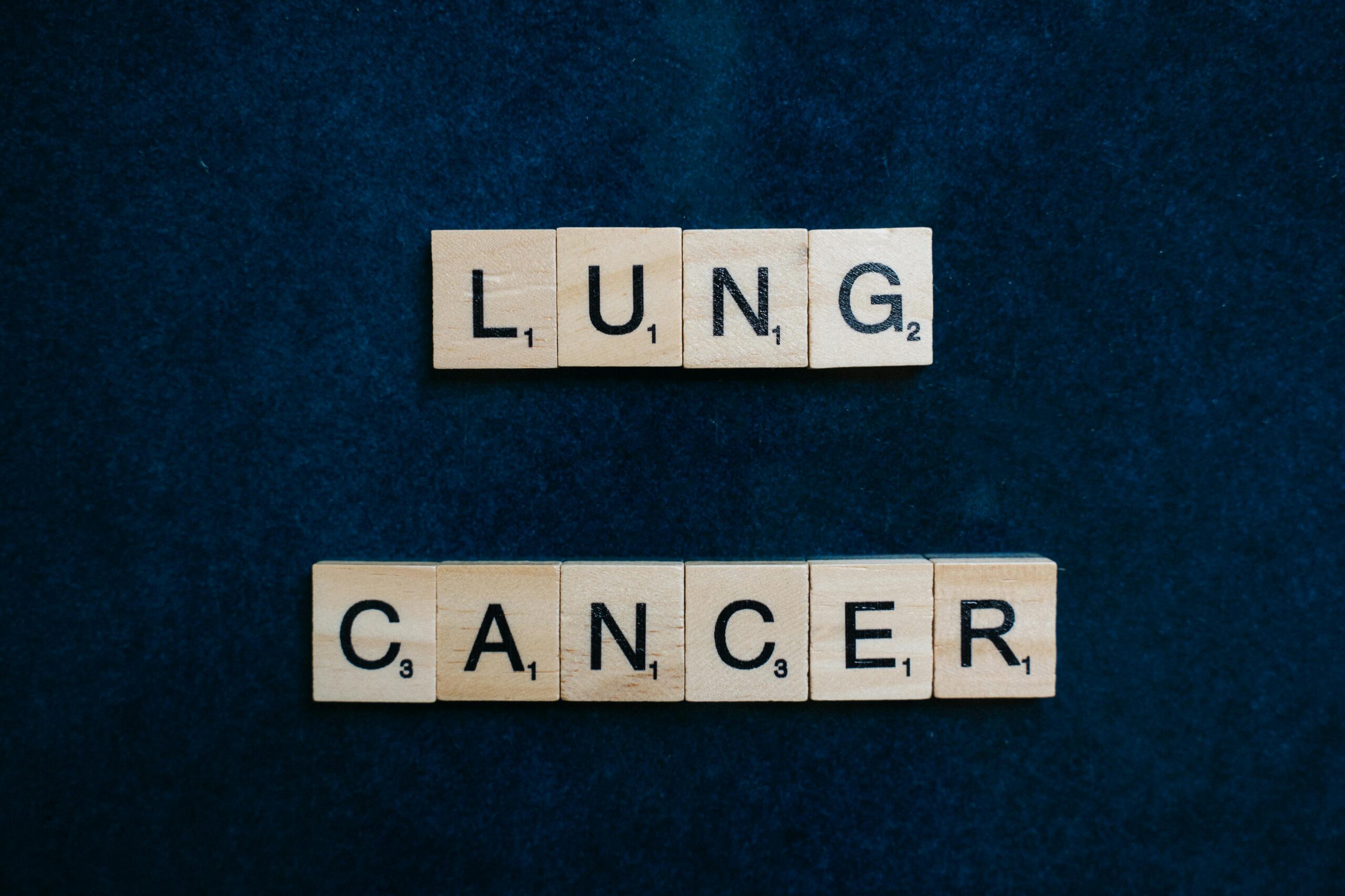Symptoms of Lung Cancer
Recognizing the symptoms of lung cancer is crucial for early detection and treatment. Persistent cough, chest pain, hoarseness, and shortness of breath are common signs. Additionally, unexplained weight loss, coughing up blood, and recurrent respiratory infections could indicate the presence of lung cancer.
Understanding these symptoms of lung cancer can lead to timely medical intervention and improved outcomes for individuals at risk. Lung cancer often manifests with subtle signs, but early detection is crucial for better treatment outcomes. Here are some common symptoms of lung cancer to watch out for:

- Chest Pain : Persistent chest pain that worsens during deep breaths, laughter, or coughing.
- Hoarseness : Unexplained changes in your voice.
- Chronic Cough : A lingering or worsening cough that doesn’t resolve.
- Shortness of Breath : Difficulty breathing, especially during physical activity.
- Wheezing : Audible whistling sound while breathing.
- Fatigue and Weakness : Feeling unusually tired and weak.
- Weight Loss : Unintended weight loss without dietary changes.
- Coughing Up Blood : Hemoptysis—coughing up blood or blood-streaked phlegm.
- Muscle Weakness : Generalized weakness and reduced stamina.
- Nausea and Vomiting : Especially if unrelated to other factors. Remember, if you experience new, severe, or persistent symptoms, consult a healthcare provider promptly.
Causes of Lung Cancer
Lung cancer, characterized by symptoms of lung cancer such as persistent cough, chest pain, and coughing up blood, can be caused by various factors. The primary cause is cigarette smoking, which accounts for the majority of cases. Exposure to secondhand smoke, radon gas, asbestos, and other carcinogens also increases the risk of developing lung cancer.
Additionally, a family history of lung cancer and previous radiation therapy to the chest are known risk factors. Identifying and addressing these risk factors can help reduce the likelihood of developing this deadly disease.
Understanding the causes helps us take preventive measures. Here’s what contributes to lung cancer:
- Smoking : Cigarette smoking remains the primary cause. However, nonsmokers can also develop lung cancer due to other risk factors.
- Radon Exposure : Radioactive gas (radon) seeping into buildings through small holes.
- Genetic Mutations : Certain genetic mutations increase the risk.
- Asbestos and Heavy Metals : Exposure to asbestos, cadmium, selenium, etc.
- Family History : A family history of lung cancer.

Complications and Prevention
Untreated lung cancer can lead to complications:
- Shortness of Breath : As cancer cells grow and block airways.
- Fluid Accumulation : Lungs can’t expand fully due to fluid buildup.
- Bleeding : Coughing up blood due to bleeding in the airways.
- Metastasis : Cancer spreading to other parts of the body.
Prevention strategies include
- Quit Smoking : The most critical step.
- Avoid Passive Smoking : Stay away from secondhand smoke
- Workplace Safety : Minimize exposure to harmful chemicals.
- Healthy Diet : Consume carotenoid-rich foods, cruciferous vegetables, vitamin E sources, and foods high in vitamin C and folic acid.
Diagnosis and Treatment
Diagnosis
Diagnosing lung cancer typically involves a combination of imaging tests, biopsies, and physical exams. Symptoms of lung cancer can vary but often include a persistent cough, coughing up blood, chest pain, hoarseness, unexplained weight loss, and recurring respiratory infections such as bronchitis or pneumonia. If a person presents with these symptoms, a healthcare provider may order imaging tests such as X-rays, CT scans, or MRI scans to examine the lungs and surrounding areas for abnormalities.
A biopsy, which involves removing a small sample of lung tissue for examination under a microscope, is often necessary to confirm a lung cancer diagnosis and determine the type of cancer present. Additional tests, such as bronchoscopy or PET scans, may be performed to further evaluate the extent and characteristics of the cancer. Early detection and diagnosis are crucial for effective treatment and improved outcomes in lung cancer patients.
- Imaging Tests : X-rays and CT scans reveal abnormalities.
- Sputum Cytology : Examining sputum under a microscope.
- Biopsy : Obtaining a tissue sample for lab analysis.
Staging and Treatment
Staging of lung cancer is crucial for determining the extent of the disease and guiding treatment decisions. The symptoms of lung cancer, such as persistent cough, chest pain, and shortness of breath, are considered along with imaging tests and biopsies to determine the stage. Treatment options vary depending on the stage of the cancer and may include surgery, radiation therapy, chemotherapy, targeted therapy, or immunotherapy.
Early-stage lung cancer is often treated with surgery, while more advanced stages may require a combination of treatments. Treatment plans are tailored to each individual based on their specific circumstances and may involve a multidisciplinary team of healthcare professionals.
- Staging: Determines the extent of cancer (Roman numerals I to IV).
2. Treatment Options
Treatment options for lung cancer depend on several factors, including the type and stage of the cancer, as well as the overall health of the patient. Common treatments include surgery, chemotherapy, radiation therapy, targeted therapy, and immunotherapy. Surgery may be used to remove the tumor and nearby lymph nodes if the cancer is confined to the lungs. Chemotherapy uses drugs to kill cancer cells and may be used before or after surgery, or as the primary treatment for advanced lung cancer.
Radiation therapy uses high-energy rays to kill cancer cells and may be used alone or in combination with surgery or chemotherapy. Targeted therapy and immunotherapy are newer treatments that target specific abnormalities in cancer cells or boost the body’s immune system to fight cancer. These treatments can help manage symptoms of lung cancer and improve quality of life. Treatment decisions should be made in consultation with a healthcare team experienced in treating lung cancer.

- Surgery: Lobectomy, wedge resection, segmental resection, or pneumonectomy.
- Chemotherapy: Intravenous drugs to kill cancer cells.
- Targeted Therapy: Drugs targeting specific abnormalities in cancer cells.
- Radiation Therapy: High-energy beams to eliminate cancerous cells.
- Immunotherapy: Boosts the immune system to fight cancer. Remember, early detection and personalized treatment plans significantly impact lung cancer outcomes. Consult a specialist promptly for proper evaluation and care.
Conclusion
In conclusion, recognizing the symptoms of lung cancer is crucial for early detection and treatment. Persistent cough, chest pain, shortness of breath, coughing up blood, fatigue, unexplained weight loss, and recurring respiratory infections are key indicators that should not be ignored.
Seeking prompt medical attention upon experiencing these symptoms, especially for individuals with risk factors such as smoking, can significantly improve the chances of successful treatment and recovery. It is essential to prioritize lung health, adopt healthy lifestyle choices, and consult healthcare providers for proper guidance and screening to reduce the impact of lung cancer.
FAQ
What are the common symptoms of lung cancer?
Persistent cough
Chest pain
Shortness of breath
Coughing up blood
Fatigue
Unexplained weight loss
Recurring respiratory infections
Are there any less common symptoms of lung cancer?
Hoarseness
Wheezing
Difficulty swallowing
Swelling in the face or neck
Bone pain
Headaches
When should I see a doctor if I experience these symptoms?
If you have a persistent cough that lasts more than a few weeks
If you cough up blood
If you have chest pain that is persistent or worsens with deep breathing, coughing, or laughing
If you experience unexplained weight loss or fatigue
If you have difficulty breathing or swallowing
What are the risk factors for lung cancer?
Smoking
Exposure to secondhand smoke
Exposure to radon gas
Exposure to asbestos and other carcinogens
Family history of lung cancer
Previous radiation therapy to the chest
Can lung cancer be cured if detected early?
Yes, lung cancer can be cured if detected early and treated promptly. Treatment options may include surgery, radiation therapy, chemotherapy, targeted therapy, or immunotherapy.
How is lung cancer diagnosed?
Diagnosis may involve imaging tests such as X-rays, CT scans, or MRIs, as well as biopsies to examine tissue samples for cancer cells.
Is there anything I can do to reduce my risk of developing lung cancer?
Quit smoking and avoid exposure to secondhand smoke
Test your home for radon gas and take steps to reduce exposure if necessary
Avoid exposure to carcinogens such as asbestos
Eat a healthy diet rich in fruits and vegetables
Exercise regularly
Consider screening for lung cancer if you are at high risk, as recommended by your healthcare provider.

